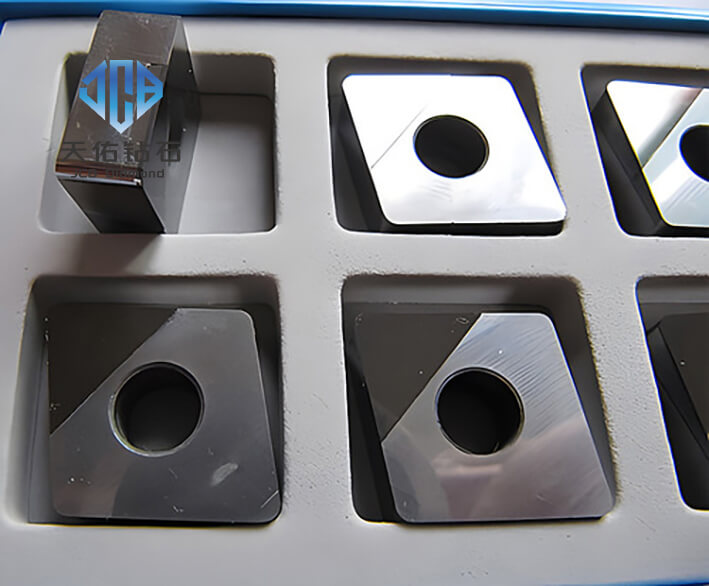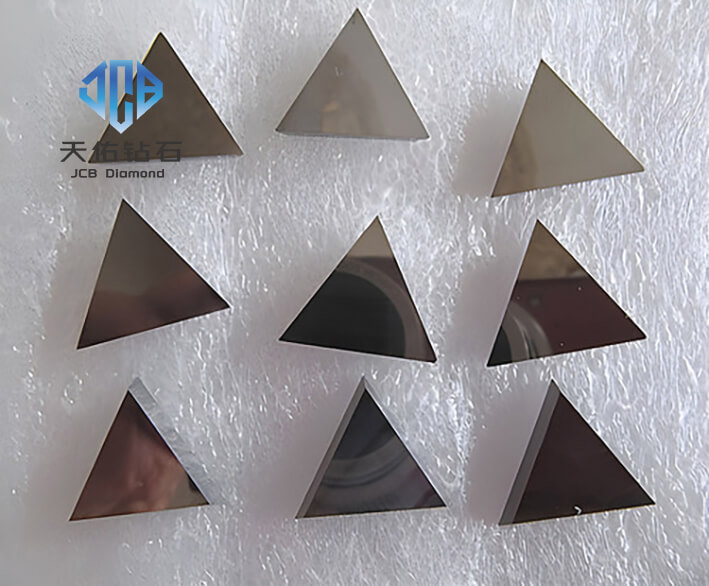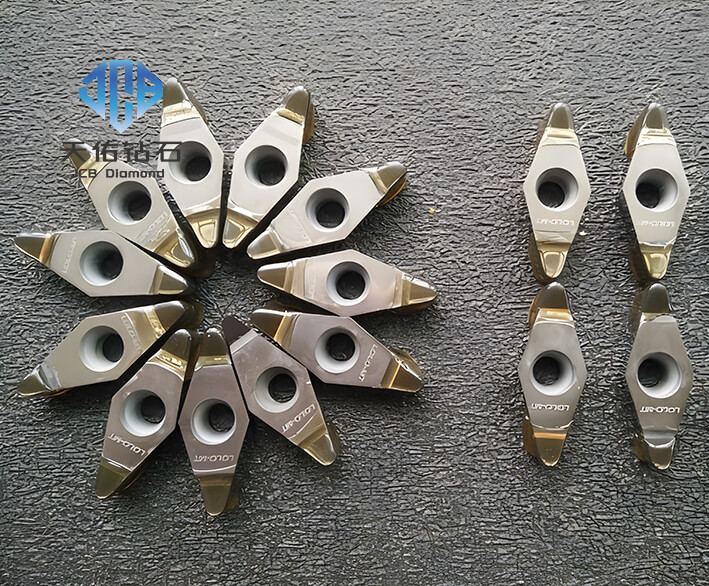1. Introduction
As the demand for high-precision and high-efficiency machining in modern manufacturing continues to grow, the performance of tool materials has become one of the key factors. As a super-hard material tool, PCD cutting tools have been widely used in many fields due to their excellent wear resistance, high hardness and cutting performance, and have gradually become important tools in metal cutting, wood processing, composite material processing and other industries. . This report aims to conduct in-depth research and analysis on the performance, manufacturing process, application fields and market status of PCD cutting tools, and provide reference for related industries.
2. Performance characteristics of PCD cutting tools
High hardness and wear resistance
PCD cutting tools are second only to natural diamond in hardness and have extremely high wear resistance. During the cutting process, it can maintain the sharpness of the blade, reduce tool wear and replacement frequency, thereby significantly improving processing efficiency and processing accuracy. It is especially suitable for processing high-hardness and high-strength materials, such as non-ferrous metals and their alloys, ceramics , cemented carbide, etc.
High thermal conductivity
Good thermal conductivity enables PCD tools to quickly transfer cutting heat during the cutting process, reduce the temperature of the cutting edge of the tool, reduce tool wear and thermal deformation caused by high temperature, and help improve tool life and machined surface quality.
low coefficient of friction
The friction coefficient with the material being processed is low, which helps to reduce the generation of cutting force and cutting heat, reduces the roughness of the machined surface, and also reduces the wear of the tool, making PCD tools more effective in high-speed cutting and precision machining. Excellent performance.
chemical stability
PCD cutting tools have good chemical stability and are not prone to chemical reactions with the materials being processed during the cutting process. They can ensure the chemical purity and surface quality of the workpieces and are suitable for processing materials that are sensitive to chemical components.

3. Manufacturing process of PCD cutting tools
Raw material selection
The main raw materials of PCD cutting tools are diamond powder and metal binder. The quality and particle size distribution of diamond powder as well as the type and content of metal binders have an important impact on the performance of PCD tools. Usually, high-quality artificial diamond powder is used, and the particle size ratio and metal binder formula are optimized to meet different processing needs.
High temperature and high pressure synthesis
High-temperature and high-pressure (HPHT) technology is used to sinter diamond powder and metal binders under high temperature (about 1400 - 1600°C) and high pressure (about 5 - 6 GPa) conditions to form PCD composite sheets. This process forms a strong bond between diamond particles, and the metal binder plays a role in bonding and supporting the diamond particles, giving the PCD composite sheet good mechanical properties and cutting performance.
Tool processing
The PCD composite sheet is cut into the required tool shape and size, and then the cutting edge of the tool is precision processed through grinding, polishing and other processes to ensure the edge quality and geometric accuracy of the tool. The sharpening process of the tool is crucial to its cutting performance, requiring the use of high-precision grinders and appropriate grinding parameters to ensure the sharpness and surface roughness of the blade.
Coating treatment (optional)
In order to further improve the performance of PCD tools, such as increasing wear resistance, reducing friction coefficient, etc., some PCD tools are coated. Commonly used coating materials include TiN, TiAlN, DLC (diamond-like coating), etc. The coating processes mainly include physical vapor deposition (PVD) and chemical vapor deposition (CVD).
4. Application fields of PCD cutting tools
Automobile manufacturing industry
In the processing of automobile engine cylinder blocks, cylinder heads, pistons, crankshafts and other parts, PCD tools are widely used. For example, when boring and milling aluminum alloy cylinder blocks, PCD tools can efficiently remove metal materials, ensuring processing accuracy and surface quality, while improving processing efficiency and reducing production costs. In addition, PCD tools also play an important role in the field of precision machining and high-speed cutting of automotive parts.
aerospace industry
Aerospace parts usually use high-strength, lightweight alloy materials, such as titanium alloys, nickel-based alloys, etc., which are difficult to process. PCD cutting tools can meet the precision machining requirements of aerospace parts due to their high hardness and wear resistance. They are used to process key components such as aerospace engine blades, fuselage structural parts, and landing gears, helping to improve the manufacturing quality and quality of aerospace products. performance.
Electronic information industry
In the manufacturing process of electronic information products, such as printed circuit board (PCB) processing, semiconductor chip packaging, etc., high-precision micromachining of various metals, ceramics and composite materials is required. The high hardness, sharpness and good processing stability of PCD tools make them an ideal choice in these fields, enabling precision machining of tiny sizes to ensure the performance and reliability of electronic products.
wood processing industry
PCD cutting tools have significant advantages in wood processing and can be used to process various wooden panels, solid wood furniture, etc. Its high wear resistance and low friction coefficient can effectively reduce tool wear, improve the surface quality and processing efficiency of wood processing, prolong the service life of the tool, and reduce processing costs.
Other areas
In addition to the above-mentioned industries, PCD cutting tools are also widely used in medical device manufacturing, mold processing, stone processing and other fields. In medical device processing, it is used to manufacture high-precision surgical instruments and implants; in mold processing, it can perform efficient and precise processing of mold steel to improve the manufacturing accuracy and surface quality of the mold; in stone processing, it can be used It is suitable for cutting and engraving various stone materials, showing good cutting performance and durability.

5. Market status and development trends of PCD cutting tools
Market status
As the global manufacturing industry continues to develop, the PCD tool market is showing steady growth. At present, developed countries such as Europe and the United States are in a leading position in the research and development, production and application of PCD cutting tools. They have a number of well-known cutting tool manufacturing companies, such as Sandvik Coromant in Sweden and Kennametal in the United States. Their products occupy a large share in the high-end manufacturing market. share. In recent years, with the rapid rise of China's manufacturing industry, the domestic demand for PCD cutting tools has also been growing. Domestic cutting tool companies have continued to improve in terms of technology research and development and product quality, gradually narrowing the gap with foreign companies, and gradually expanding their market share.
Market size and growth trends
According to data from market research institutions, the global PCD tool market has continued to grow from the past few years and is expected to maintain a high growth rate in the next few years. This is mainly due to the rapid development of the automotive, aerospace, electronics and other industries and the increasing demand for high-performance cutting tools. At the same time, the upgrading and technological transformation of the manufacturing industry in emerging market countries will also provide broad development space for the PCD tool market.
Development trend
High performance: With the continuous development of processing materials and the increasing complexity of processing technology, higher requirements have been placed on the performance of PCD cutting tools. In the future, PCD cutting tools will develop towards higher hardness, wear resistance, heat resistance and cutting stability to meet the needs of high-end manufacturing industries such as aerospace and new energy for high-precision and high-efficiency processing.
Personalized customization: Different industries and customers have different needs for PCD cutting tools, and personalized customization will become one of the trends in market development. Tool manufacturing companies will provide customized PCD tool solutions based on customers' specific processing requirements, including customization of the tool's shape, size, cutting parameters, and coatings to improve the applicability and processing efficiency of the tool.
Intelligent manufacturing: The development of intelligent manufacturing technology will profoundly affect the manufacturing process of PCD cutting tools. Adopting technologies such as digital design, automated production and intelligent testing to achieve efficient and precise manufacturing of PCD tools, improve production efficiency and product quality stability, and reduce production costs.
Green environmental protection: In the context of global advocacy of green manufacturing, the manufacture and use of PCD cutting tools will pay more attention to environmental protection requirements. Developing environmentally friendly raw materials and manufacturing processes to reduce energy consumption and pollutant emissions during tool production, while improving the recyclability and resource utilization of tools, will be an important direction for the future development of the PCD tool industry.
6. Conclusion
As a high-performance cutting tool, PCD cutting tools have been widely used in many manufacturing fields due to their excellent performance characteristics and occupy an important position in the global cutting tool market. With the continuous development and technological advancement of the manufacturing industry, the market demand for PCD cutting tools will continue to grow, while its performance will continue to improve, the manufacturing process will become more advanced and intelligent, and the application fields will be further expanded. For tool manufacturing companies, they should seize market opportunities, increase investment in technology research and development, continue to innovate, improve product quality and competitiveness, adapt to market development trends and changes in customer needs, and promote the sustainable and healthy development of the PCD tool industry
